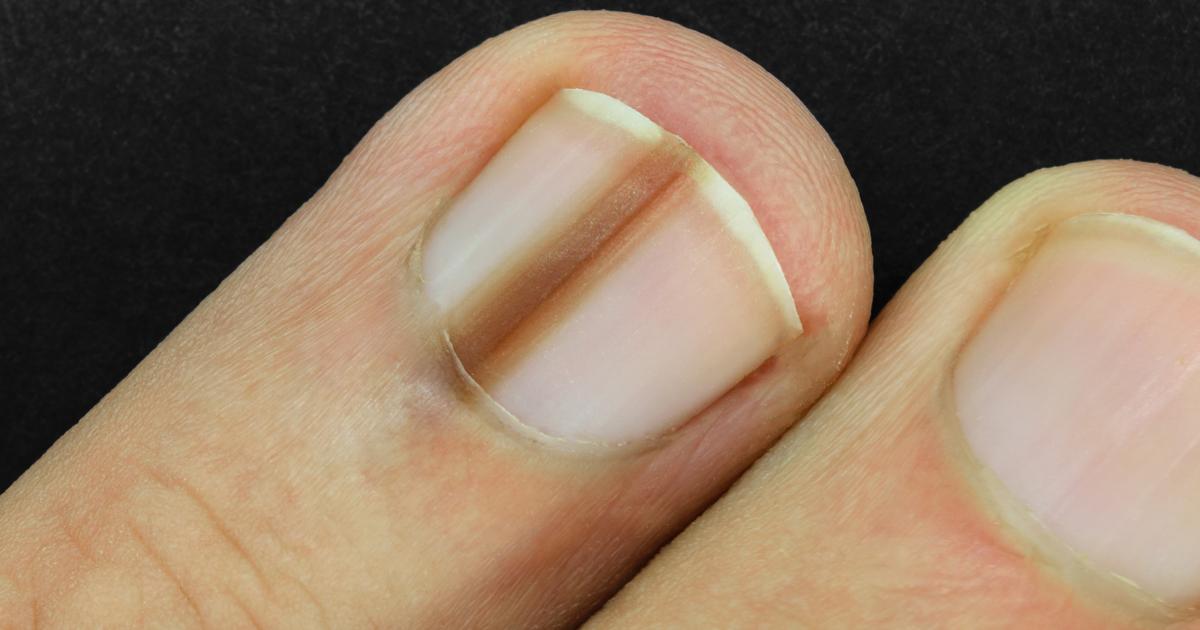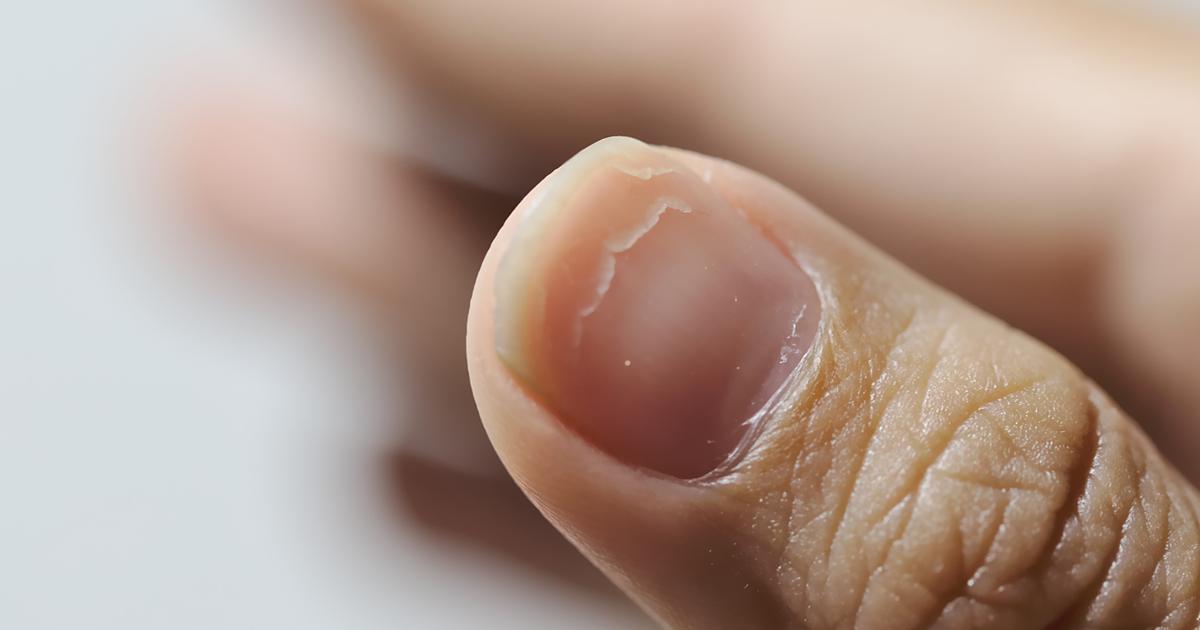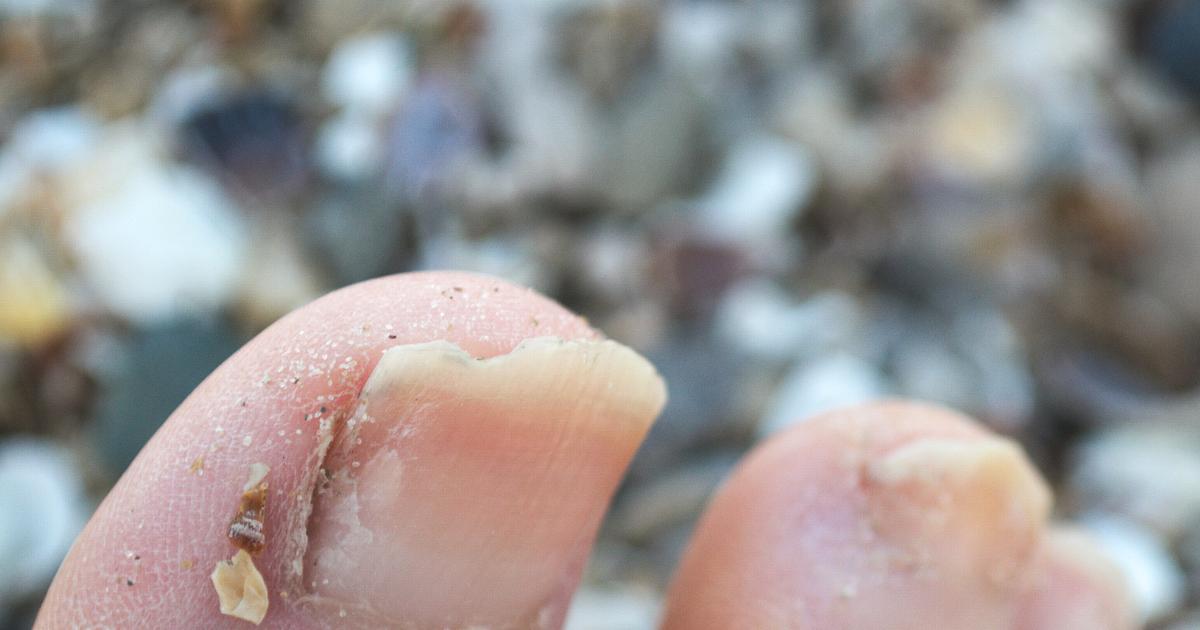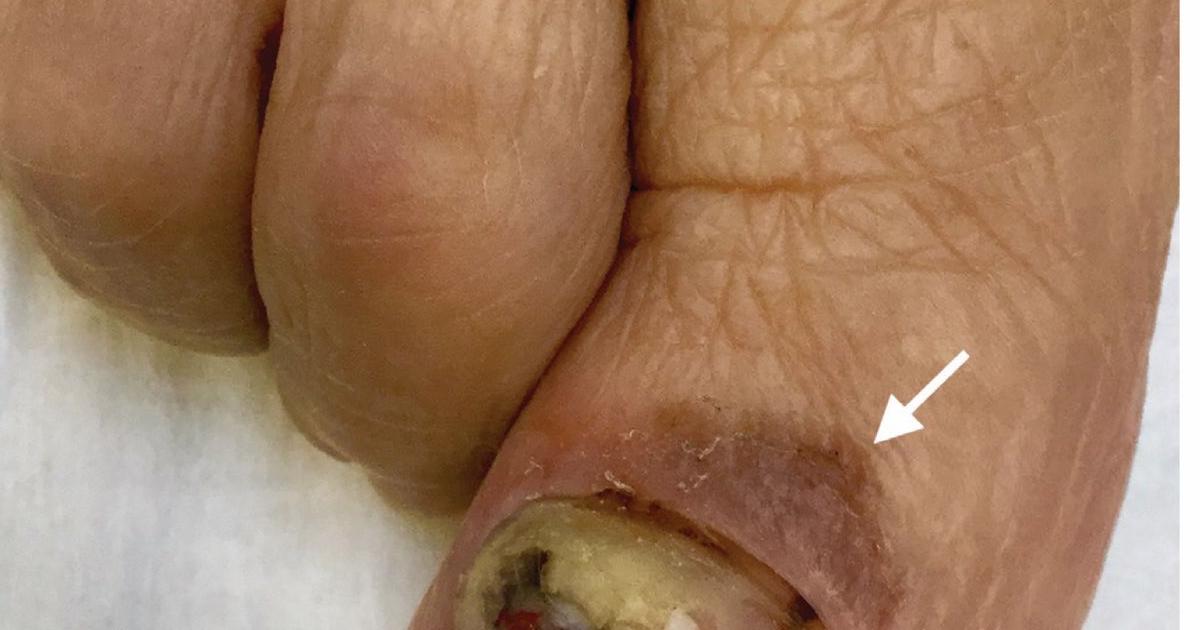Serious Symptoms Of Subungual Melanoma
Melanoma is a form of cancer that originates in the cells of an individual's skin that contain pigments called melanocytes. Subungual describes the area just underneath the fingernail. When cancer begins in the cells that form the nail matrix, it is called subungual melanoma. While most forms of melanoma are known to be the result of excessive sun exposure, subungual melanoma more often is related to trauma and or injury to the nail. A subungual melanoma diagnosis is made with a physical examination and tissue biopsy. Early detection of any melanoma is imperative, as melanoma is known to be aggressive and spread quickly to other parts of the body. The only available treatment for subungual melanoma is surgical removal of the cancerous cells and or amputation of all or part of the affected finger.
Numerous symptoms can indicate the presence of subungual melanoma. Get to know them now.
Brown Or Black Streaks Under The Nail

The most common symptom of subungual melanoma is brown or black streaks under the nail. The stripes that appear with subungual melanoma run vertically. These stripes often first appear very similar to what a subungual hematoma or an accumulation of blood under the nail looks like, causing it to often be detected at an advanced stage. A subungual hematoma only happens following some sort of injury or trauma, where there is no explanation for the appearance of subungual melanoma. A subungual hematoma will grow out as the new nail grows in from the matrix, but the discoloration from a subungual melanoma will not grow out as new nail comes in. Instead of appearing in more of an irregular shape like subungual hematoma, a subungual melanoma appears in the form of an organized stripe that begins at the bottom of the nail and can extend past the upper end of a nail. The streaks from subungual melanoma may appear a lighter brown or blue in some patients.
Continue reading to reveal more symptoms of subungual melanoma now.
Thinning Or Cracked Nail Plate

As subungual melanoma progresses to more advanced stages, patients may notice their nail has a thinning or cracked nail plate. The nail plate or corpus unguis is the outer part of the nail that is hard and composed out of translucent keratin protein. The nail plate in a healthy individual remains strong but flexible, as it has numerous layers of compacted, dead cells. The shape of an individual's nail plate is determined by the shape of the bone and tissues underneath it. When an individual has subungual melanoma, the cancerous cells begin to accumulate underneath the nail and change the shape of the underlying tissue in relation to the actual nail plate. This process causes the nail plate to become thinner in general as more and more cancerous cells take the place of cells that should be supporting and building the nail plate. The individual's nail plate weakens in and the shape of the tissue underneath it continues to grow in a different form than healthy nail tissue. This mechanism pushes the weakened nail plate in an unnatural direction in many cases and can cause it to crack vertically.
Get more information on the warning signs of subungual melanoma now.
Nails That Separate From The Nail Bed

Nails that separate from the nail bed or onycholysis can indicate an individual has subungual melanoma. Onycholysis refers to when the skin underneath the nail becomes detached from the bottom surface of the nail plate, which causes the nail to appear to the eye as a different color because it is no longer in direct contact with the pink flesh underneath it. A nail may appear white, yellow, purple, green, or gray when it has become separated from the nail bed. Nail separation from the nail bed usually does not take place until the subungual melanoma has started to push the nail plate away from the underlying skin. The accumulation of cancerous cells underneath the nail is typically concentrated in one area or side of the nail. As cancer grows, it can cause the rest of the surrounding nail to lift from the nail bed and become detached from the underlying skin. Onycholysis typically occurs in patients with subungual melanoma that has not caused the nail plate to become weak enough to crack but lift with the cancerous growth instead.
Uncover more symptoms of subungual melanoma now.
Dark Skin Next To The Nail

An individual who notices they have dark skin next to their nail may be affected by subungual melanoma. This symptom is less common than other symptoms and typically does not manifest until the melanoma has grown past the visible area of the nail. A healthy human nail extends past the visible nail plate underneath the cuticle. When the individual's subungual melanoma spreads down into this portion of the nail that sits underneath the skin closest to the surface of the nail plate, it can make the skin appear a different color. This discoloration may be as mild as a slightly darker shade of the normal skin tone, or it may take on a black, dark brown, blue, dark gray, or purple tone. The skin discoloration around the nail plate in a subungual melanoma is usually a lighter tone, as the skin is less translucent than the nail plate. Individuals often mistake this discoloration as a bruise of some sort, but it never actually heals the way a bruise would.
Learn more about the key symptoms of subungual melanoma now.
Bleeding Around The Nails

An individual with subungual melanoma may experience bleeding around the nails. The nail plate is attached to the underlying nail bed by skin components that form a tight seal. The skin that makes the seal between the nail bed and nail plate where the top free nail edge emerges is a vascular-rich and an extremely sensitive area referred to as the hyponychium. The perionychium is the skin around the nail that is prone to the annoyance of hangnails and can bleed easily. Anything that causes even mild irritation to these parts of the skin around the nail can cause inflammation. Subungual melanoma can cause bleeding around the nails through several mechanisms. Subungual melanoma is known to force the nail to grow in abnormal directions and become distorted. These irregularities can disrupt the healthy skin fold arrangement around the nail, resulting in inflammation and bleeding. Subungual melanoma is also known to cause the nail plate to become weak and brittle. The nail plate can easily split, break, and tear when it is in a weakened condition, and these injuries can pull on the skin surrounding the nail. As a result, the skin around the nail can become damaged and bleed.
